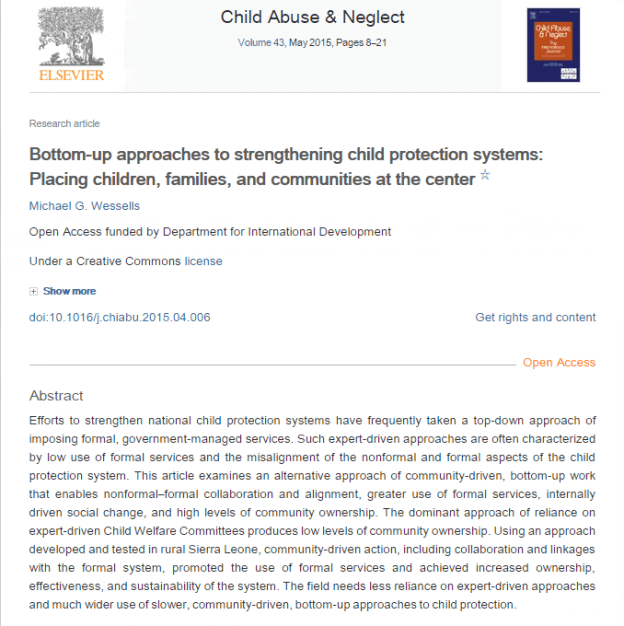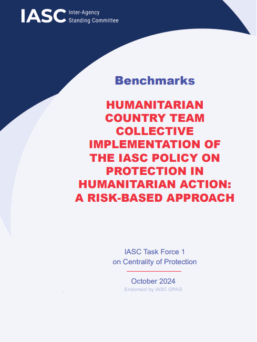An important finding of the article is that the child protection field needs less reliance on expert-driven approaches and much wider use of slower, community-driven, bottom-up approaches to child protection. This reflects several key elements and critical components of results-based protection including:
- Starting with the affected population to understand the individual and community self-protection capacities. The article highlights that “although these externally initiated mechanisms [Child Welfare Committees or Child Protection Committees established by international NGOs] are valuable, it is a mistake to think of them as the main CBCPMs (community-based child protection mechanisms). Communities frequently have endogenous mechanisms that act locally, without facilitation or guidance from NGOs or the government.” Greater community ownership evolved from examples where NGOs served as facilitators who listened, learned about local power dynamics, identified natural helpers, enabled child-focused dialogues, and patiently cultivated community awareness of and action to support vulnerable children, rather than acting as experts.
- Strengthen national and local partnerships with civil society. The research identified four broad categories or modes of community engagement: 1) direct service approach; 2) expert-driven partnerships; 3) NGO facilitation of community planning and action; 4) Community-initiated management of activities from within, with little or no external support. The most frequently used mode of community engagement by NGOs fell in category two, or partnership approach, that showed discernible strengths of rapid start up and time urgent response but lacked high levels of community ownership needed for achieving maximum effectiveness and sustainability. The approach that shows the greatest promotion of community ownership utilized a method that emphasized communities’ own decision making and action. This method was “intentionally slow and reflected the community’s own pace and readiness to include different people in dialogues, discuss issues iteratively, and take collective decisions.”
- Hire competent staff that has the skills and experience to facilitate and coordinate a results-based approach. The community-driven approach described above involved much deeper, nonjudgmental listening to different people than is usually done and requires child protection actors to be “co-learners” and play a more facilitative role. Yet, “the advanced skills of facilitation needed for this process may not be present in many child protection agencies, because the humanitarian system prizes technical expertise and rapid, scalable action.”
Click HERE to read the full article.



